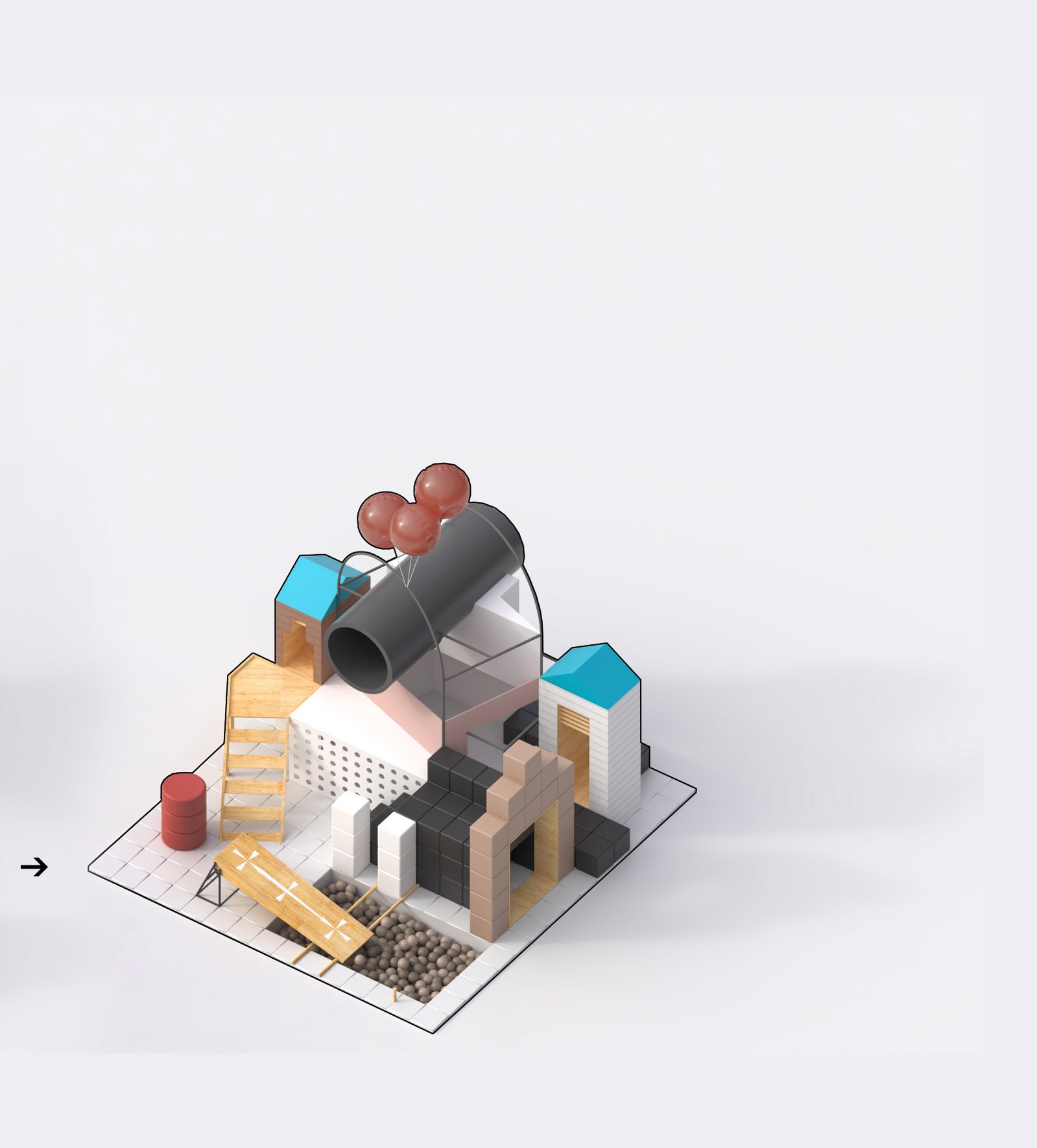
The Portable playground
Turning the burying scene into a playground
This presented playground is a design-based attempt to achieve a contemporary interpretation of a sixteenth-century painting. The Seven Works of Mercy, a prominent legacy of the Dutch painter The Master of Alkmaar, consists of notable narratives, spatial aspects, and historical points that can be represented based on present-day concerns. The chosen section for this curiosity is the fourth and middle painting, known as Burying the Dead.
The cited painting which is regarded as an example of traditional Christian art, by referring to Bible values and beliefs, is a manifestation of the spirit of an era in which the society was being formed and nurtured under the dominance of the church narrative. The portable playground, by derivation From the visual structures of this painting, aims to achieve the spirit of this concern and be an example of a contemporary spatial figure. A place where people are entertained and shaped to this point that even recreational spaces can be considered as a part of this control and observation process.
The Alkmaar playground seems like a church for kids. These kids are the symbol of the society that Imperceptibly authorizes the educational system and media (culture industry), and defines concepts, paradigms, and social roles constantly. Playing with these infinite concepts is the thing established in the structure of the city and society from birth to death.
Numerous visual and conceptual components in the painting can be represented and transmogrified into the new place as a playground. This challenging process needs each sector to be oriented toward the new function. Turning the grave into a ball pool and seeing the coffin as a wooden slide are some examples of this process. Furthermore, the volumetric and visual composition of the painting was trying to be followed in the new design.
It should be mentioned that this attempt as a contemporary volumetric and architectural interpretation of an old painting can be a part of continuous searching. It is imaginable to follow this approach for the other 6 sectors and challenge this process with other contemporary functions that exist in cities.
a contemporary spatial figure, a place where people are entertained and shaped to this point that even recreational spaces can be considered as a part of the control and observation process.





